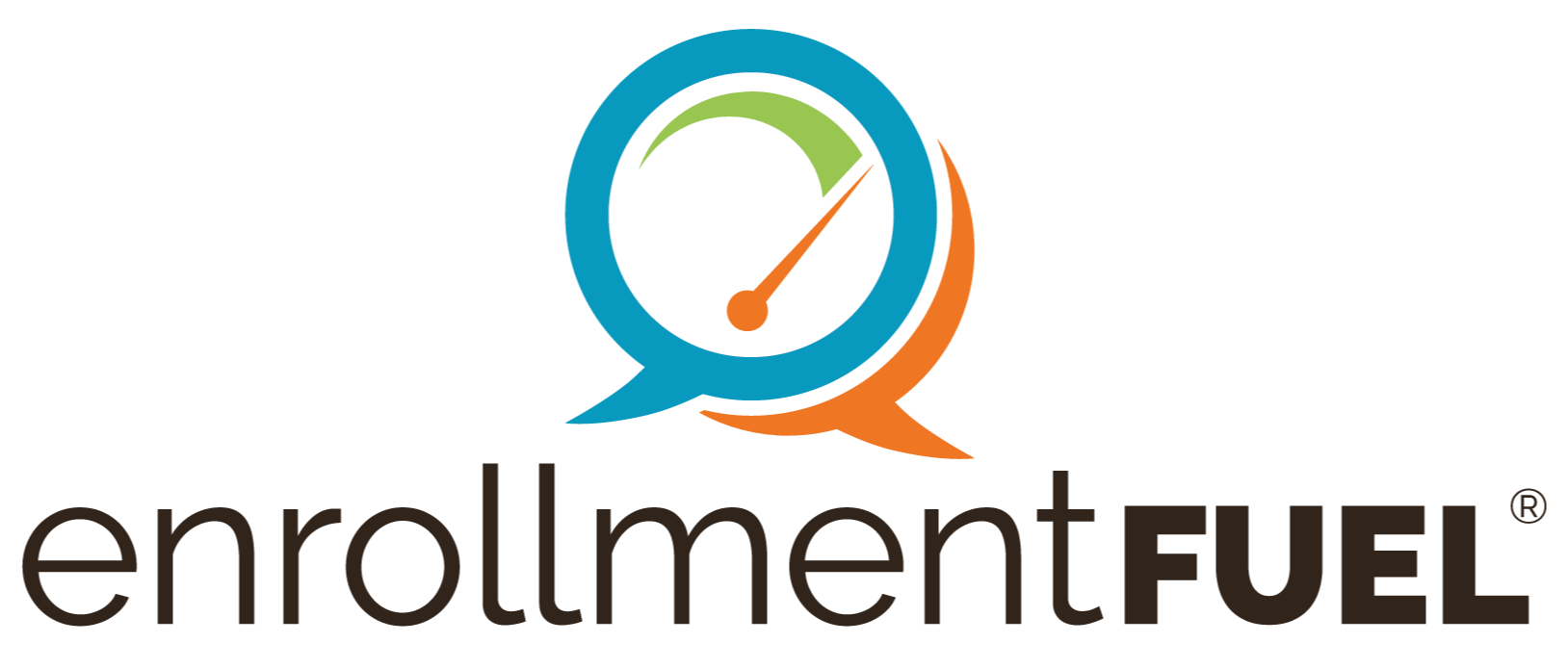Even before the upheavals caused by the global pandemic, college and university boards have experienced increasing pressure and scrutiny at both private and public institutions. In a 2015 PBS article titled, “Once Invisible, College Boards of Trustees Push into the Spotlight,” they reported, “Populated largely by wealthy alumni and political appointees, university and college boards of regents and trustees have historically operated largely out of sight. But as tuition escalates, along with questions about what students and their families get for their money, boards are finding themselves in an unaccustomed spotlight — or are taking matters into their own hands.”1

For institutions to succeed, everyone on the board must understand the role and challenges faced by enrollment management teams and be receptive to your messages. In Persuading People, published by the Harvard Business Press, receptivity is defined as “an audience’s openness to a persuader and his or her ideas.”2
They also identify six categories defining the various degrees of receptivity where new board members could fall:
- Hostile – disagrees with you
- Neutral – understands your position, but still needs convincing
- Uninterested – informed, but doesn’t care
- Uninformed – lacks information and needs convincing
- Supportive – already agrees with you
- Mix – contains a cross-section of attitudes and views
It is likely you could experience any one of these categories in your work with new or sitting board members moving forward, so you must be armed with not only a persuasive posture, but also knowledge and evidence regarding your case. As you begin thinking about how to orient your new board advocates, key concepts will need to be shared in order for them to successfully navigate on your behalf. Keep reading for helpful tips, and learn more about what sitting vice presidents had to say about their experience.
Education is a Must
Scott A. Schulz, Ph.D., the Vice President for Enrollment Management at Baldwin Wallace University and adjunct professor at Pennsylvania State University, has served in cabinet-level positions for many years."To build relationships with new board members, I serve as an educator and a guide," Dr. Schulz said. “As an educator, my responsibility is to provide trustees with a foundation, beginning with the understanding that enrollment management is fundamentally about managing the needs and expectations of people, both inside and outside the institution. Trustees need to be in a position to recognize the elements of a successful enrollment operation, components of a functional and effective enrollment funnel, and the inherent trade-offs related to the pursuit of quality, access, and revenue. As a guide, my role is to provide historical data, market insight, and strategic options to the trustees, while steering our collective efforts toward the pursuit of enrollment goals informed by the institutional mission and values.”
Rachel Nichols, Vice President for Enrollment Management at Lenoir-Rhyne University, said, “When it comes to enrollment management, it’s important for board members to understand their role – which is not to tell us who to admit. At many small private institutions, revenue is tuition-driven. Financial aid leveraging is crucial, and new board members should be taught fundamental concepts like the difference between net tuition revenue versus the tuition discount.” Ms. Nichols also pointed out that college admissions are much different from when the board members were making college choices. “For institutions to succeed, you need strong systems and technology support.”
Cynthia Peterson, M.Ed., the Associate Vice President for Undergraduate Enrollment at Piedmont College, said, “Since most colleges and universities are dependent on tuition revenue, enrollment is the key ingredient for an institution’s financial health. Understanding the socioeconomic qualities, motivations, and satisfaction of enrolled students is critical for new board members.”
At Piedmont College, Ms. Peterson has facilitated interactions between students and board members that ranged from formal presentations to conversations during group lunches. She also educates new board members on important demographic trends, using the detailed data and projections found in the WICHE (Western Interstate Commission for Higher Education) report, Knocking at the College Door. Ms. Peterson said, “Analyzing high school graduation rates by region and by ethnicity and race for the next five to ten year period is critical to board members’ understanding of the potential state of an institution and to align budgets with priorities.”
Making a Case for Institutional Distinctiveness
When it comes to building relationships with new board members, Stefanie Niles, Ed.D., Vice President for Enrollment and Communications at Ohio Wesleyan University, agrees with Peterson—the VP should educate new board members about demographics and changing expectations. “Trustees should have a firm grasp of the data around college attendance and persistence for all the populations their college enrolls. This could be traditional-aged, first-year, non-traditional, transfers, students of color, first-generation students, low socioeconomic status students, international students, and others. Understanding both institutional, state, and national enrollment trends for these subgroups helps the board gain a realistic picture of enrollment expectations. Additionally, changing demographics bring different financial, academic, cultural, and emotional needs, requiring new types of support for students.”
Institutional distinctiveness is another area where Dr. Niles believes there needs to be a focus. She said, “Students are inundated with catchy emails, pretty campus pictures, and similar messages describing the ‘exceptional’ and ‘transformative’ opportunities an institution provides. How can they tell them apart? Being distinctive and showcasing your distinctive qualities and programs is imperative when the marketplace is so crowded. Articulating a value proposition for the institution should start with its leadership, and the board should be part of these strategic deliberations. Both long-time and new trustees should be supportive of achieving outcomes in their role as financial stewards of the institution.”
Plan for Practical Considerations
The Investment Model of Commitment Processes, developed by Caryl E. Rusbult, Ph.D., is one of the best-known and most influential theoretical frameworks in the area of close relationships. This model holds that one factor influencing commitment is the investment in the relationship and the persistence of the interactions.3 Building relationships and educating board members will be subject to time constraints and limiting conversation opportunities.
Dr. Schulz said, “Some boards meet more frequently than others. For those boards that meet 2-3 times per year, it is important to be more comprehensive, establish and revisit definitions, present contextual information related to the external market, and provide updates regarding current recruitment and retention efforts. During COVID, the board at Baldwin Wallace University began to meet monthly. This helped facilitate even greater dialogue between administrators and board members, leading to more targeted meetings and collaborative efforts designed to solve immediate challenges and discuss future opportunities.”
Jameia A. Tennie, M.S., Director of Undergraduate Admissions at North Carolina A&T State University, also has practical tips for helping new board members understand enrollment management’s role and challenges. To ensure credibility, she recommends sharing third-party data, such as WICHE and census reports, along with institutional data. It isn’t enough to just share your own data without a backdrop against which to compare it. Siloed institutional data is limiting and does not help board members better understand the entire enrollment landscape at a national level.
Ms. Tennie further suggests that “when designing board presentations aimed at showing the student’s progression toward enrollment, be sure the presentation is easy to follow and common enrollment terms are explained.” This strategy keeps discussions on track and reduces time spent on explanations needed to satisfy the understanding of new board members.
As a way to both educate and build commitment among trustees to her department’s mission, Ms. Tennie said, “I also provide opportunities for new board members to engage with faculty, staff, and students, and invite them to recruitment events so they can personally experience recruiting efforts.”
Strategies like these help board members see the connection between data, tactics, and outcomes. A deeper understanding of the process, competitive environment, and challenges create a stronger link between the job and budget requirements.
What About Pitfalls and Dangers?
The “drinking from a firehose” analogy is an apt one when applied to new board members who are gulping down large amounts of information. Dr. Schulz offers these tips for success:
1. Realize you need to provide the good, the bad, and the ugly.
Trust in trustees’ desire to want what is best for the institution, rather than viewing them as adversaries evaluating your effectiveness as an enrollment manager. You will be less tempted to over-promise and spin data to fit a particular narrative. Instead, work with trustees to examine the evidence and find a collective way forward.
2. Don’t make assumptions
Enrollment managers emp
loy a lot of tools and utilize a ton of field-specific jargon. Don’t assume people who do not work in the enrollment sector understand or interpret the information the same way you do. For example, enrollment managers realize headcount and financial aid model forecasts are not a guarantee. These models may set up false or unrealistic expectations if they are not properly presented and contextualized.
3. Admit your mistakes.
When success depends on the decisions of 17-year-olds made within an ever-changing environment, mistakes will be made. Trustees are human. They realize errors happen. Trust and humility go farther than efforts to create a persona falsely projecting an unrealistic degree of perfection.
4. Define success.
Often, enrollment management success is narrowly defined by reaching a series of standard metrics – first-year headcount, GPA, test scores, diversity, and net revenue indicators. In reality, multiple metrics across numerous populations should also be considered when assessing the effectiveness of an institution’s enrollment approach. Metrics centered on student and family satisfaction following a visit or engagement should be considered, as well as metrics focused on the morale and well-being of enrollment staff.

- Retrieved from: https://www.pbs.org/newshour/education/invisible-college-boards-trustees-move-spotlight
- Persuading People (Boston, Massachusetts: Harvard Business Press, 2008), PP 20-21.
- Retrieved from: https://docs.lib.purdue.edu/psychpubs/26/
Download Article
Related Articles
Get Found: SEO Lessons from STEM University
The world most college administrators grew up in – where students searched for their college or...
How and Why College Students Select an Institution
I recently went to dinner with a friend of mine. The dinner was fabulous, the company even better,...
Boundless Organizations—5 Stages of SEM Office Evolution
During our travels across the wide landscape of U.S. higher education, we have seen many different...





Leave A Comment